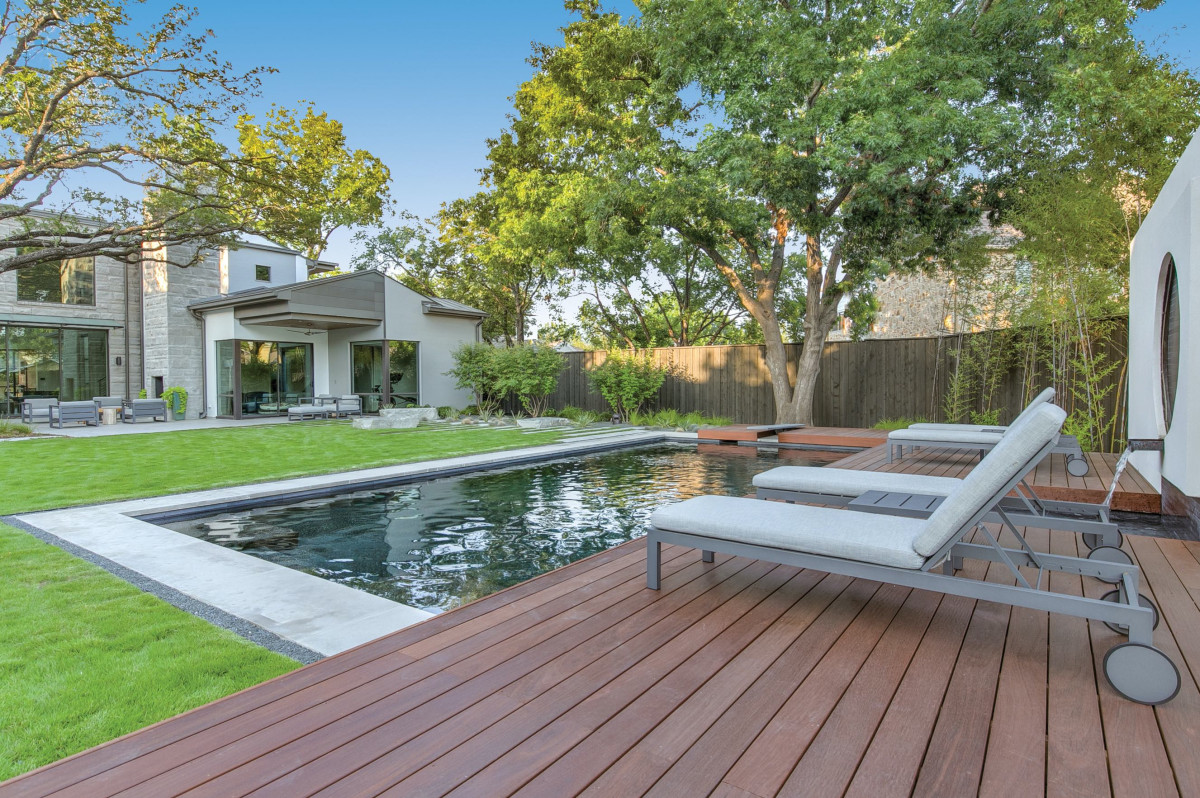
6 Types of Sustainable Decking
We step out onto our decks to admire the sunrise as we sip a cappuccino, curl up in the chaise lounge over fascinating fiction, and entertain endless guests with bubbly to the brim, but just how green is that ipe beneath us anyway? Between our climate crisis and the increasing costs of building materials, choosing sustainable construction products is even more desirable than ever. We aim to be good stewards of our natural resources by building in an environmentally conscious way that preserves the longevity of our investments while protecting the environment for future generations. However, when it comes to eco-friendly decking, there is some controversy. Let’s delve into today’s seemingly sustainable decking options to discover the pros and cons of the major patio players.
It’s Not Easy Being Green
What exactly determines a material’s sustainability factor? There’s more to being green than meets the eager, earth-loving eye. What is its history? Was it sourced responsibly? How was it manufactured? What is its overall carbon footprint during its lifespan? Sure, being environmentally conscious is a lot to consider, but preserving the earth for future generations is essential. In short, every action required, every living organism affected, and every natural resource utilized play into account to determine a building material’s sustainability.
Sustainable Decking Materials
Lifestyle, budget, and personal aesthetics, and environmental consciousness all factor into choosing sustainable decking materials. Although ample options exist, responsibly-sourced hardwoods can be reclaimed, recycled, and they’re ultimately biodegradable.
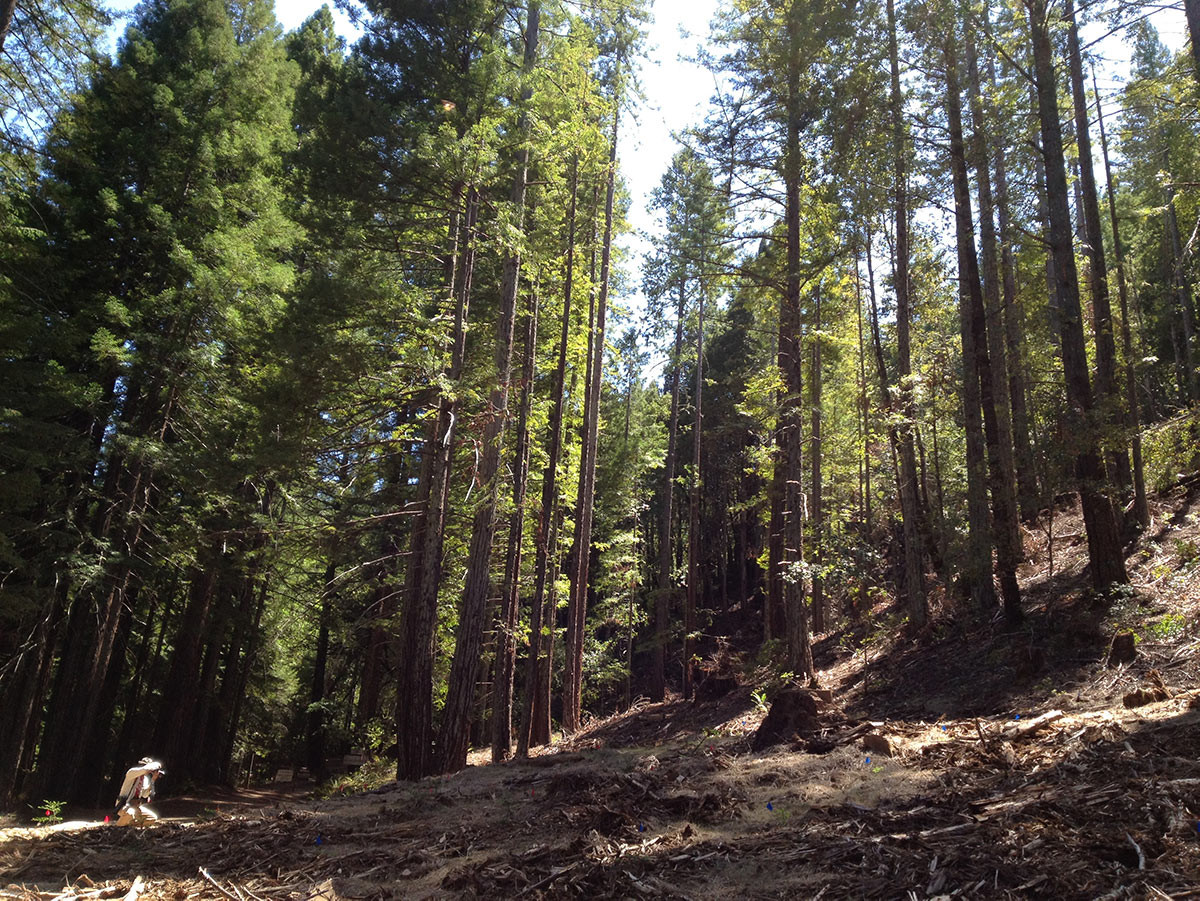
In sustainable forestry, young trees are responsibly harvested in a manner that protects the health of waterways, plants, animals, and soils. (Save the Redwoods League)
Responsibly-Sourced Hardwood
The Texas Forestry Association subscribes to the principles of sustainable forestry set by the Sustainable Forestry Initiative: To practice sustainable forestry to meet the needs of the present while promoting the ability of future generations to meet their own needs by practicing a land stewardship ethic that integrates reforestation and the managing, growing, nurturing, and harvesting of trees for useful products, and for the provision of ecosystem services such as the conservation of soil, air and water quality and quantity, climate change adaptation and mitigation, biological diversity, wildlife, and aquatic habitats, recreation and aesthetics.
Basically, sustainable wood has been harvested responsibly from regularly replenished, well-managed forests while carefully regarding the surrounding natural environment. Responsibly sourced wood is a quintessential option for sustainable decking.
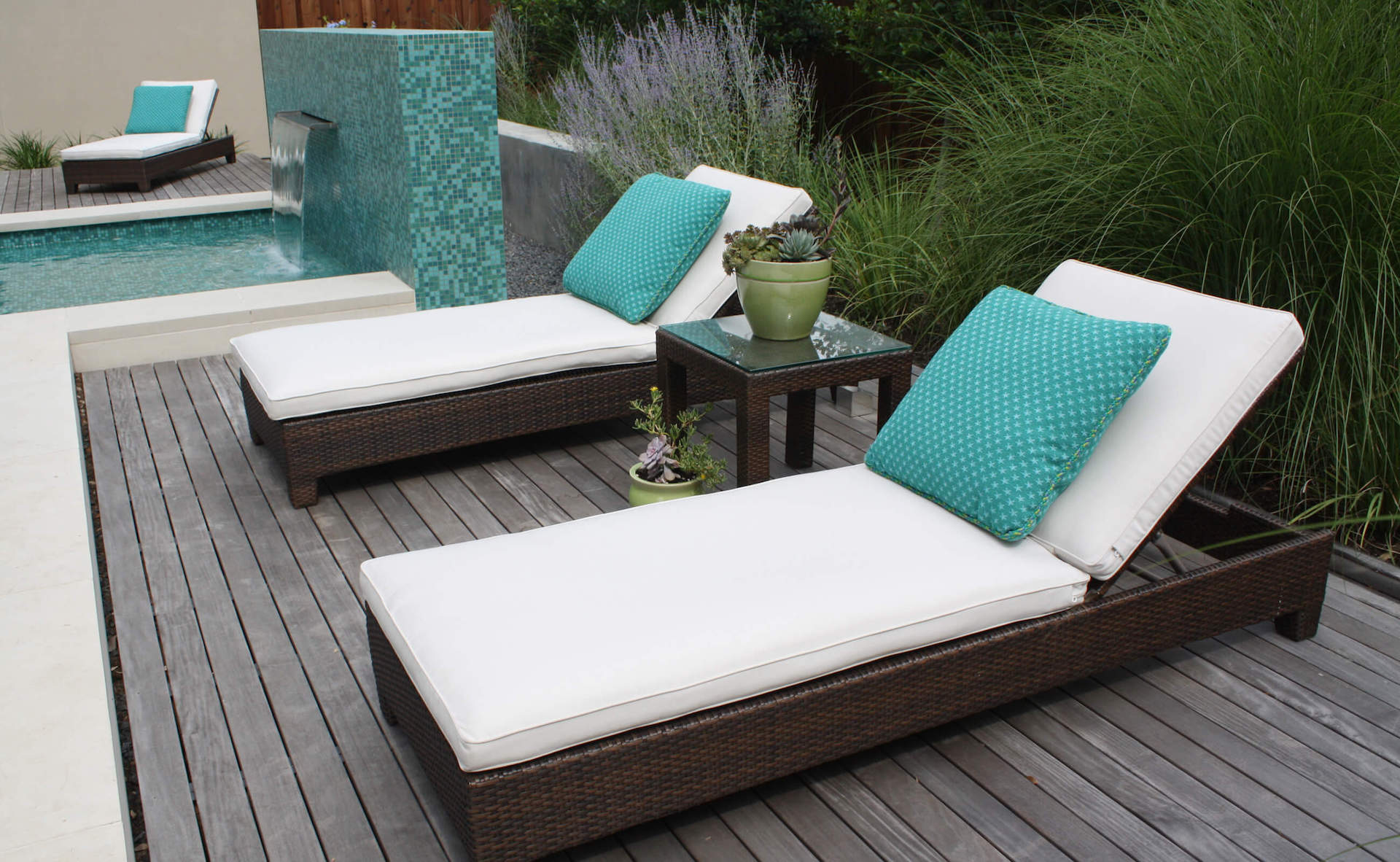
A weathered Ipe sun deck provides a stunning contrast to this turquoise-tiled pool.
Ipe Decking
An exquisite favorite of architects, designers, and builders, exotic Ipe is a costly, but highly coveted Brazilian hardwood. Topping the hardness scale, this impeccably dense, tropical timber bolsters up to twenty-five years of endurance and ages decadently through the decades. Boasting a class-A fire rating and naturally resistant to fungi and insects, durable Ipe is an excellent choice for decking. However, because of its hefty hardness, standard saws, hammers, and nails are rendered useless. Instead, this well-weathered wood requires additional labor expenses to pre-drill holes, and craftsmen must employ steel screws and often go through additional saw blades during fabrication. Plus, due to the uncertainty of responsible sourcing methods, the long distance it travels during importation, and the energy expensed during assembly, its carbon footprint makes it notably the most controversial contender for sustainable decking materials. One certain way to avoid Ipe involved in deforestation is to utilize water reclaimed Ipe. Tree huggers, rejoice: no living trees are cut down, and the energy expended during harvest is significantly less, making it a much more sustainable decking option.
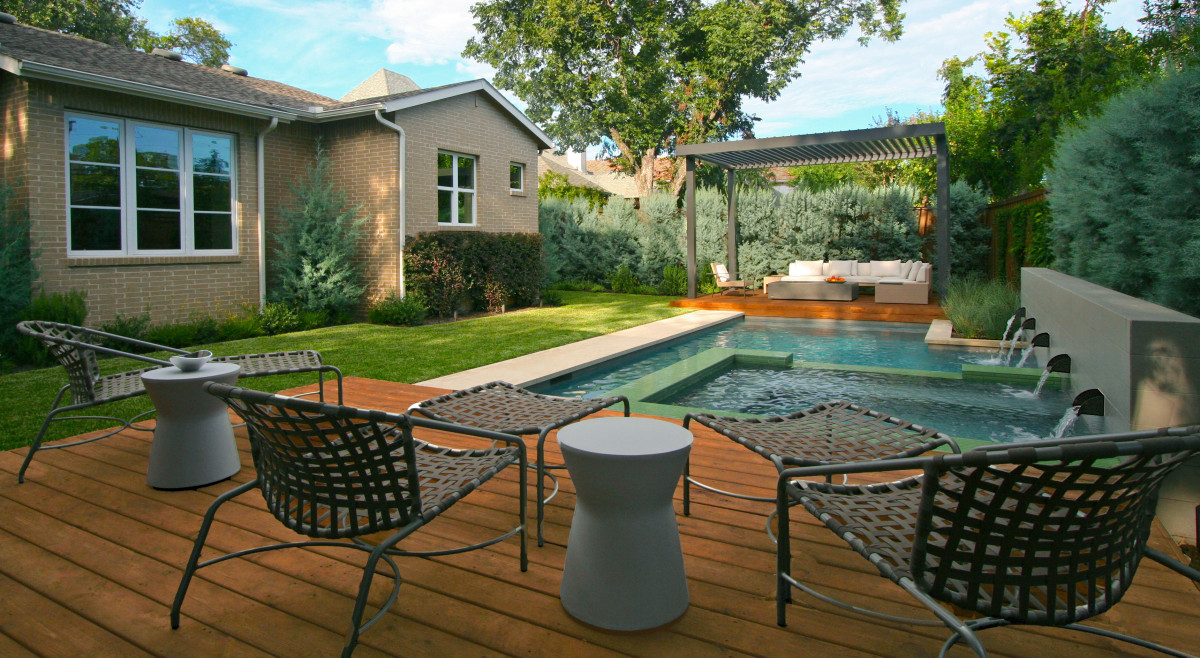
Unequivocably alluring, durable, and immensely stable, cedar emits aromatic oils which not only provide a pleasing scent but prevent decay and act as a natural insect repellent. Cedar produced from the Real Cedar brand is sustainably sourced from responsibly managed forests, making it a completely renewable resource. At least three trees are planted for every tree harvested, and Western red cedar is manufactured with minimal impact on the environment.
Redwood Decking
Redwood’s refined beauty and resilience aren’t its only advantages. Since it’s lighter than other hardwoods, standard tools can be used, which emit fewer greenhouse gases. More than 20% stronger than cedar, redwood is also resistant to decay and insects, making it an ideal decking option.
Sadly, due to extensive logging during California’s Gold Rush, only 5% of the original Redwood Forest remains today. Now, nearly all harvested redwood used in our building materials is derived from young trees. However, harvesting these sturdy saplings through sustainable forestry can actually reduce the impact of climate change.
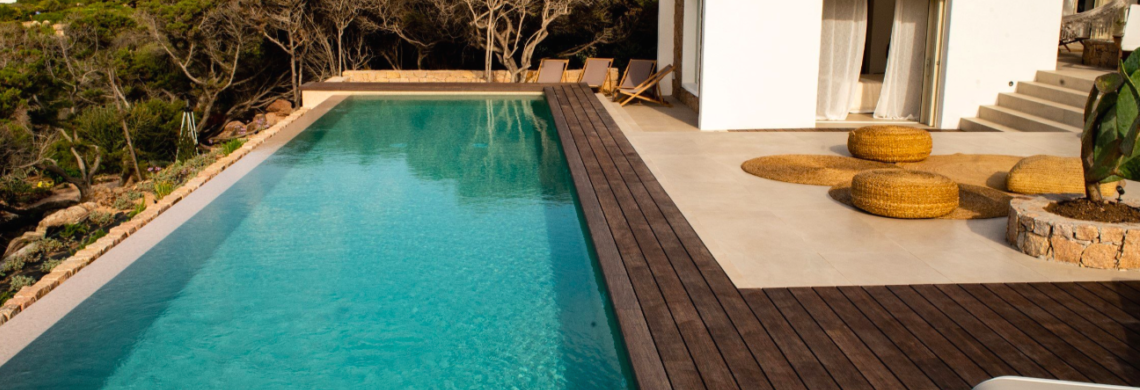
MOSO® bamboo decking in a private residence in Portobello di Gallura, on the island of Sardinia in Italy.
Bamboo Decking
Because of bamboo’s rapid growth rate, mature stems can be harvested quickly and deforestation is completely avoided. In fact, cutting older stems creates space for fresh growth, which strengthens this pliable plant. This alone makes bamboo an impeccable choice for sustainable decking, compared to hardwood or composites. Plus as it grows, bamboo also absorbs copious amounts of CO2 through photosynthesis, which perpetuates for the rest of its lifespan.
However, the majority of bamboo decking products are manufactured from bamboo stems which are split into strips, literally stripping its sustainability factor. For this reason, we love Thermo-Density® bamboo by MOSO.® This heat-treated, compressed bamboo is more stable and durable than typical bamboo products and is produced in ethical working conditions. This climate-friendly powerhouse product comes proudly equipped with a 25-year warranty and its developers are continually researching ways to improve upon its sustainability.
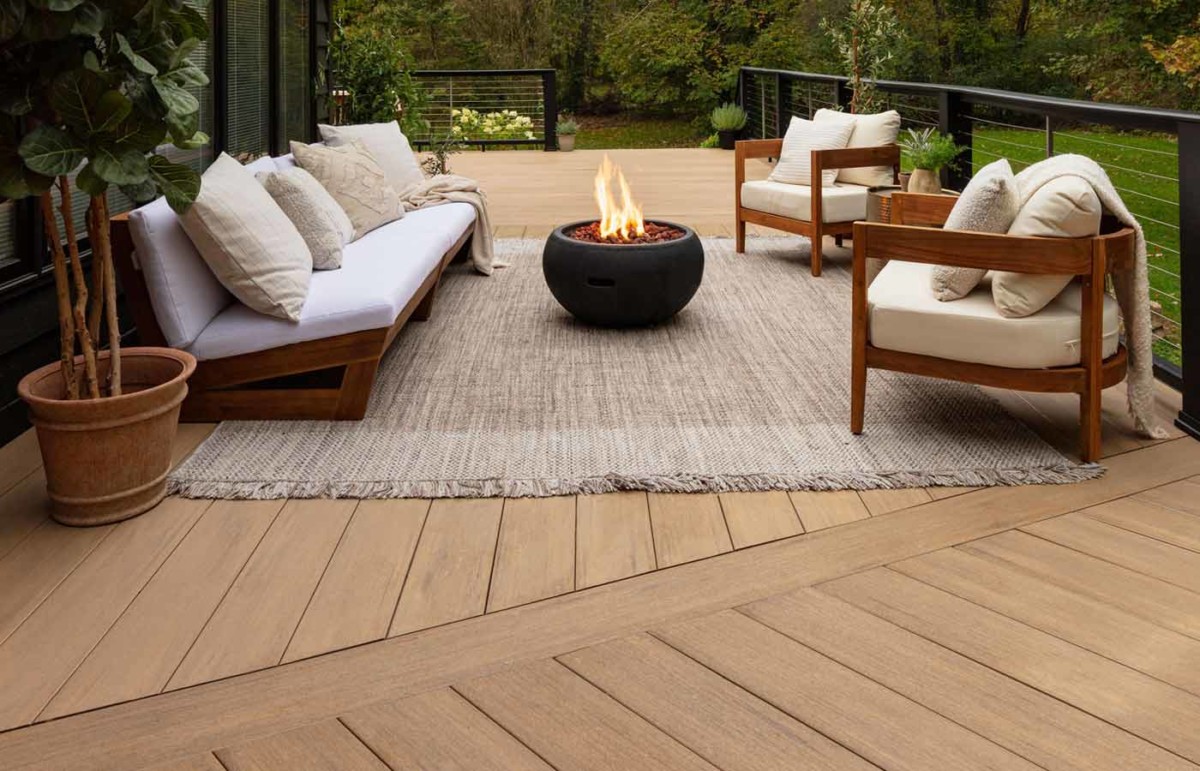
Composite Decking
With a host of composites available in today’s market, it’s daunting to know where to start. Composite decking has become increasingly popular due to the reduced cost, the durability of its finish, and the dwindling supply of lumber. Comprised of recycled and new plastics, bamboo, and wood fibers, these synthetic products have evolved over the years and are considered eco-friendly by some. Composite companies revel in their use of recycled content, which creates an eco-friendly illusion. However, an enormous amount of energy is expended during the manufacture of these products which emit harmful greenhouse gases. Manufactured through either compression molding to produce solid planks or by pressing raw materials through shaping molds in an extrusion process, these sustainable decking options are much less susceptible to splits, stains, scratches, mold, and mildew.
While composite decking wouldn’t be our first choice for sustainable decking materials, there are some brands that are a cut above the rest. We prefer TimberTech’s AZEK products for their quality, realistic wood-like appearance, and their 50-year fade and stain warranty. TimberTech utilizes up to 80% recycled materials in their composites and their Azek boards keep feet cooler in triple digits, making them a competitive choice for pool decking.
Recycled Decking Materials
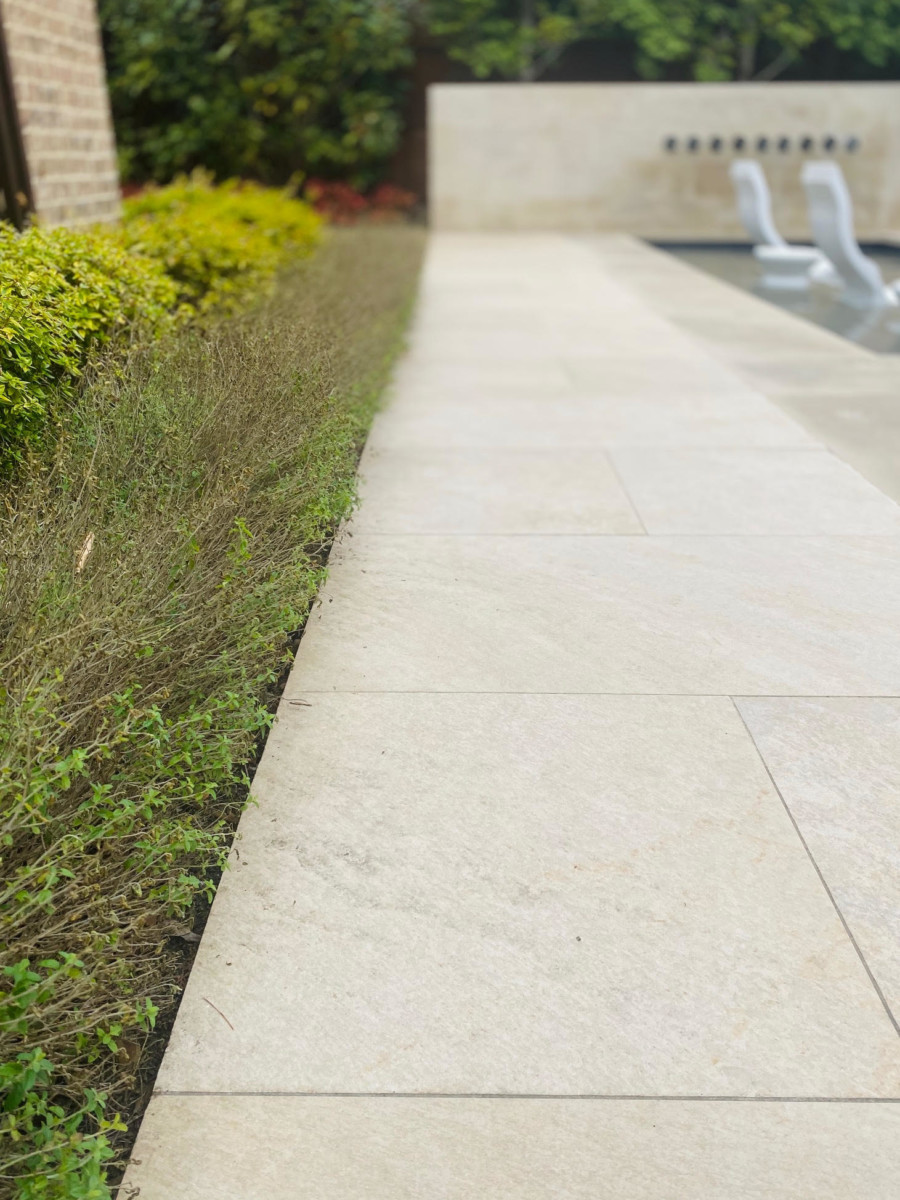
Porcelain
Several recycled decking materials serve up sustainability and style, but our choice these days is porcelain. These posh pavers have gained popularity not only for their clean, contemporary beauty but also for their functionality. More sustainable than stone, these tenacious, antimicrobial tiles are comprised of recycled components that resist staining and offer easy-to-clean maintenance with fewer grout joints. Their non-slip surface makes them the perfect pick for poolside decks and pathways. With visual varieties that emulate cool stone to rich wood planks, this hardscape option offers styles to suit nearly every taste. Although its manufacturing utilizes extensive energy, its longevity upon installation (60 years vs 10-15) levels the playing field, leaving it with a low carbon footprint.
Still glazed over from all of the green options? Never fear; our 40 years of expertise affords us the knowledge to guide you through your sustainable decking options so you can create your dream outdoor space with a clear conscience. Contact us today for a complimentary consultation.
Sources:
https://www.epa.gov/ghgemissions/household-carbon-footprint-calculator
Home
https://www.texasforestry.org/
https://www.greenamerica.org/green-living/green-hands-deck
https://www.gardenista.com/posts/10-things-nobody-tells-ipe-wood/
3 https://gbdmagazine.com/porcelain-tile-supports-health-and-sustainability/
https://blog.moso-bamboo.com/how-environmentally-friendly-are-bamboo-decking-boards
Save the Redwoods






